A graphic design career does not show signs of tapering off, and designers are able to adjust to the current tech and job trends. Remote working has become more popular, especially after the rise of the WFH trend during the pandemic. You can turn remote graphic design work into something permanent, but it takes strong preparation to earn clients’ trust and regular income.
Benefits of Having a Remote Graphic Design Career

Graphic design is a profession that still sees an upward trend. According to the US Bureau of Labor Statistics, the graphic design career outlook sees a three percent increase between 2020 and 2030. While it is slower than other professions (which see an average increase of eight percent in the same period), the outlook still provides around 23,900 job openings for graphic designers.
Being a remote graphic designer is a great move to utilize this trend. With technologies for communication and work collaboration widely available, you can serve clients without getting tied to fixed physical places. You can also save money for commuting, footwear, gasoline, and other basic utilities.
Graphic design is a job that requires endless creativity and brainstorming. Remote working allows you to find an ideal workplace that has fewer distractions and makes you more comfortable.
Developing Your Graphic Design Goal
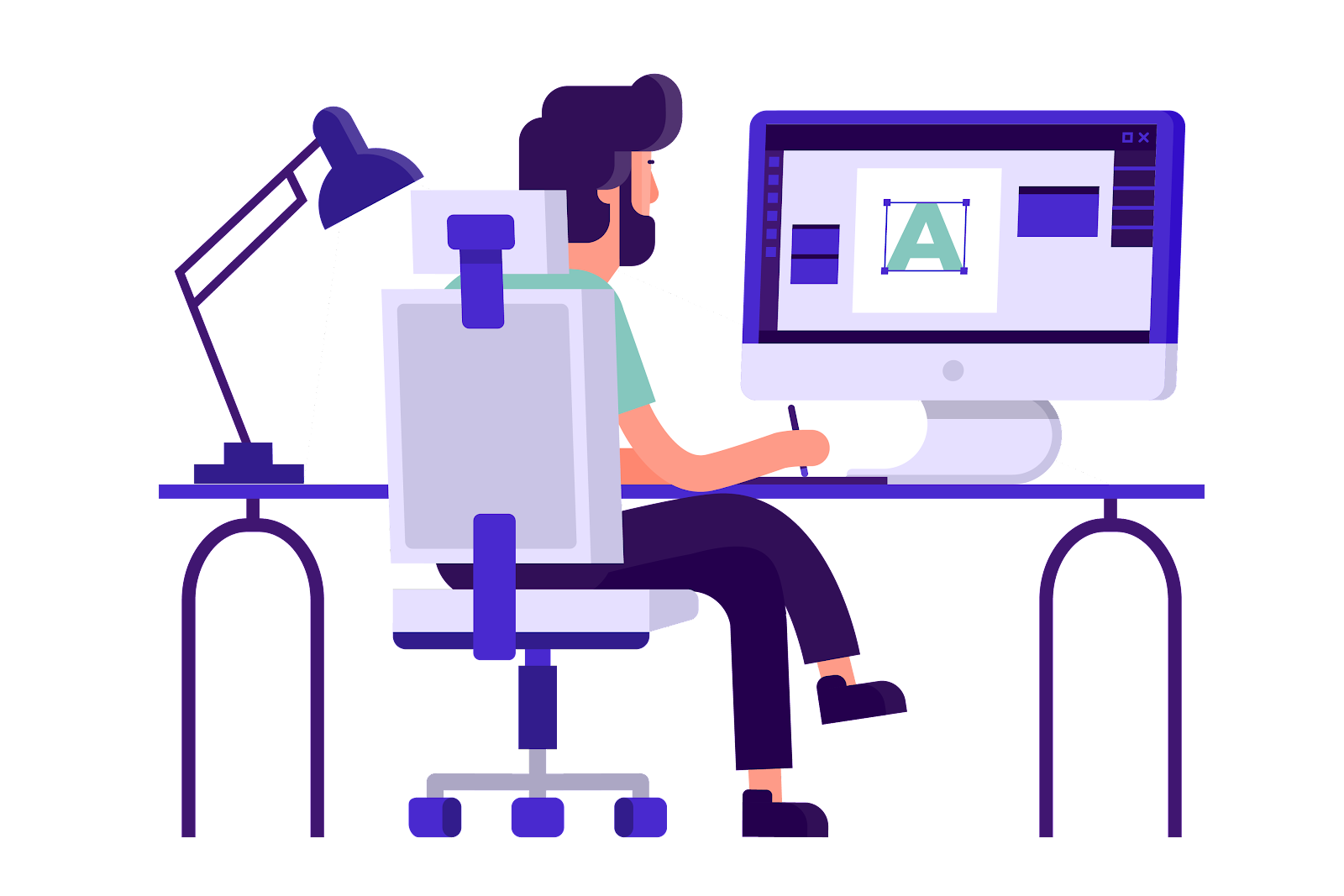
Like other professions, graphic design has specialties. If you want to develop a strong path of career, develop a field specialty. It will help you collect the right skills, resources, and connections to develop your name as a professional remote designer.
Some basic specialties in a graphic design career include:
-
Branding and Advertising Design
A common specialty in the commercial field, branding, and advertising design supports companies and businesses in their activities. Design is a part of engaging the public, promoting corporate values and messages, and serving customers. Design tasks for these purposes include creating labels, logos, social media posts, ads, and many more.
Graphic designers are also responsible for creating visual concept. This involves combining elements like colors, typography, images, and patterns to create a visual representation of a brand or name.
-
Publication Graphic Design
Publication graphic design mostly works with publishers, media, and other companies or organizations that distribute informative materials. Your job usually involves materials like books, magazines, periodicals, newspapers, newsletters, catalogs, and other publications, both traditional and digital.
-
UI Graphic Design
UI (user interface) is closely related to how users interact with visual elements of websites or apps. In this field, you will work closely with UX designers, app and web creators, and other related professionals to create the best digital or online experiences for the end users.
-
Packaging Graphic Design
Graphic design for packaging may overlap with marketing and business. You must have skills to create designs that transfer well to physical surfaces, like bottles, boxes, and other containers. You also create concepts and mock-ups that can be printed and used immediately.
-
Graphic Design in Arts and Illustrations
If you have a strong artistic soul, you can be a full-time artistic graphic designer. In this field, you create original artwork in various styles, depending on your skills and preferences. You can create 2D illustrations, vector art, and 3D images or photo manipulation artworks. Graphic designers with these skills can also work in industries like animations and video games, or create designs for fashion items.
Many graphic designers focus on one or two fields, while others learn cross-discipline skills. You can always develop your skills to attract more prospective clients once you strengthen the basics.
Preparing the Professional Identity
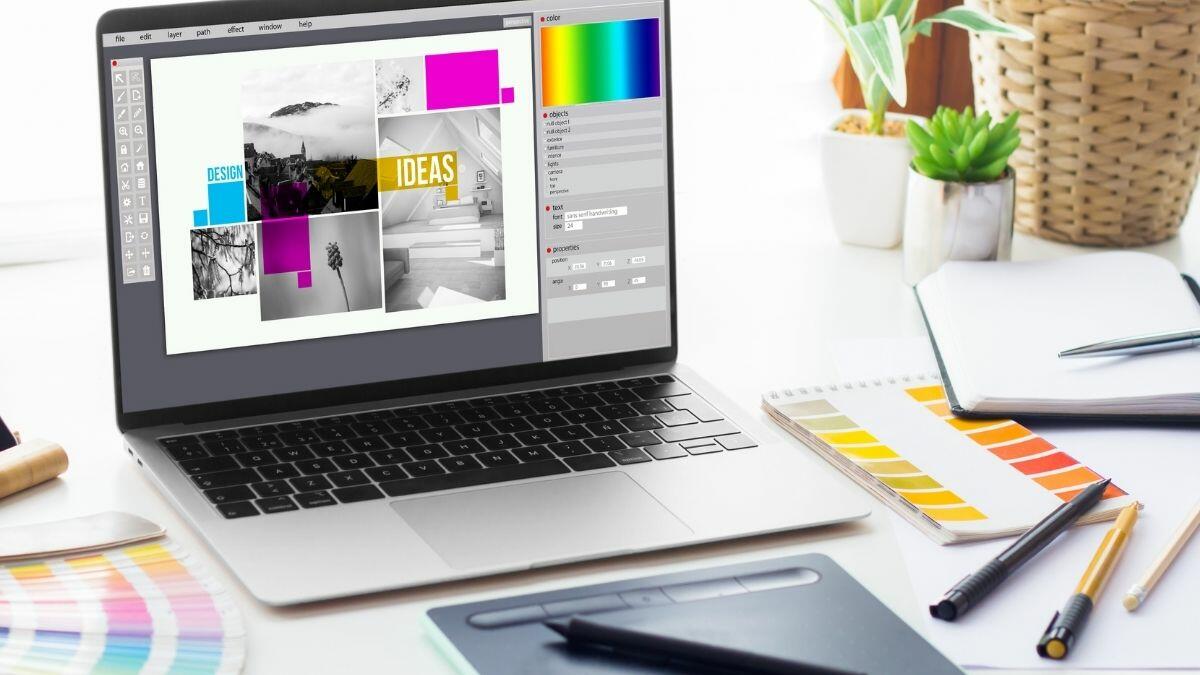
Developing a remote graphic design career is challenging because you need to earn the trust of future clients. Developing a strong professional identity is important to convince the public about the quality of your work.
Here are elements of professional identity you need to develop as a remote graphic designer.
-
Business Name or Brand
Having a professional business name or brand is important to list and promote your service. You can use your own name, a professional artistic name, or an entirely different name for your home studio. Whatever it is, the name must be consistent whenever you introduce yourself and your work to people.
-
Visual Representation
Graphic designers should have visual representations that reflect their professional works. They can be the fonts you use for your name, the design of your website, and the images you feature on the portfolio. Your future clients will know what to expect from your service when seeing the visuals. For example, they will guess the main style of your designs and how you can contribute to their needs.
-
Online “Studio”
Having a remote graphic design career means you need to have an online “studio”. This is a website that becomes the extension of your home office or studio. Here, your clients should see your design style, portfolio, information such as pricing and business policy, explanations about your works, and your profile. Invest in annual server maintenance for a modern, sleek, high-quality website.
-
Social Media Presence
Social media is now an integral part of remote work, so make sure the ones you have are maintained properly. Create different accounts for personal and business matters if necessary. Use your professional name or the name of your studio/brand, and feature your artwork, color schemes, and typography on your profile pictures and headers. Insert the icons of your social media into your website.
-
Business Cards
Finally, despite working remotely, you still need business cards to represent your work and widen your network. If you work as a graphic designer, a business card can double as a mini portfolio. Incorporate the elements of your design on your business card, and let people get a glimpse of what you could do through it.
Must-have Graphic Design Tools
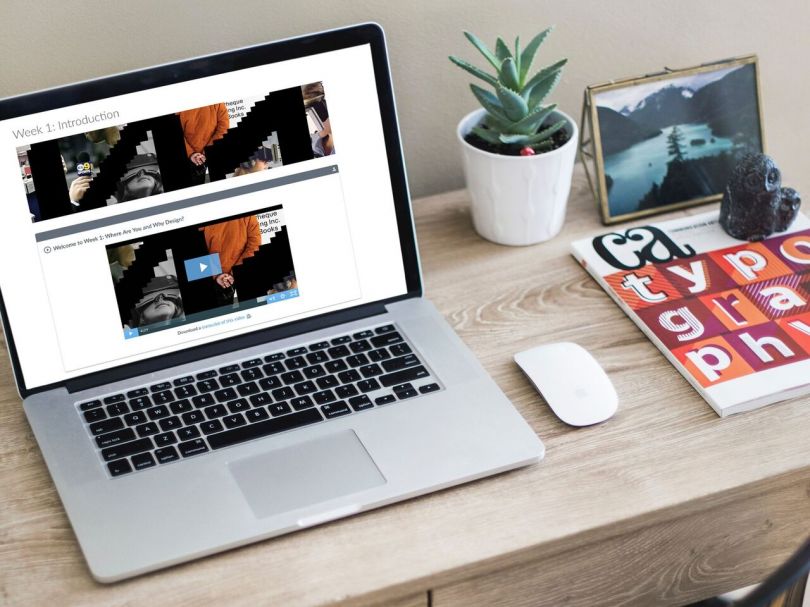
Every graphic designer worth their salt must have a proper workstation, especially if you work remotely. You can adjust your tools based on your growing clientele and work requirements, but all designers must have basic design tools, such as:
-
Desktop Computer
Desktop computer functions as the main workstation. It has enough capacity and performance to support major design works. It also has bigger capacities than a laptop and supports complicated projects. You can also connect a desktop machine with multiple screens to view a design from multiple angles.
-
Laptop
A laptop gives you a complete workstation while allowing you to be more mobile. Many laptops now come with powerful features, giving you similar performance to desktop computers. You can also carry laptops to offices, shared workspaces, schools, or even holiday spots. A perfect tool to keep your business running despite working remotely full-time.
-
Hard Drive
Aside from internal storage and the cloud, a hard drive should be a graphic designer’s friend. A 5TB hard drive, for example, gives you reliable storage space for large files. You can store audio, animation, and even video files more easily.
-
Drawing Tablet and Pen
Drawing tablets and pens are crucial for every graphic designer. A dedicated tablet should offer good pressure sensitivity and ergonomic shape, making it easier for you to draw comfortably for a long time. Wacom and iPad are big names in drawing tablets for pros, but first-time designers can get affordable options from other brands.
-
Powerful, Versatile Smartphone
Remote graphic designers should not skimp on smartphones. A good one serves as a communication tool, a camera, a video recorder, a planner, and a quick drawing tool that you can use to record bursts of inspiration.
-
Creativity Software
Make sure your studio is equipped with proper creativity software. Adobe families like Photoshop, Illustrator, After Effects, and InDesign are industry standards. While the subscriptions may be quite pricey, they give you versatile tools to create amazing works. Plus, you can get discounts on Adobe Creative Cloud. For first-time designers, you can use Affinity Photo and Designer for cheaper alternatives to Adobe Photoshop and Illustrator.
Use Tools to Support Remote Business

Remember, as a remote graphic designer, there are business and productivity aspects you need to consider. You must be able to manage your activities and please a wide range of clients. Here are some productivity and business tools to support a remote graphic design career:
-
Dropbox
Dropbox is a cloud service used to share and transfer photos and videos. You can put files in folders to organize them and share them with selected users. This is a convenient way to share the design files with your clients without sacrificing device memories or relying on a slow internet connection, for example.
-
Destination Legal
Being a remote or independent designer means you have to deal with a lot of contracts, copyright protection, and other legal matters. Destination Legal is run by attorneys and online business owners who understand the efforts to make various legal documents. If you live in the US, you can use Destination Legal to create various legal document templates based on your needs.
-
Zoom
Zoom is currently one of the top video conference tools, an inseparable app for anyone working remotely. You can talk with a group of people, perform presentations, chat, and share links or files in the middle of the conversation.
-
Basecamp
When your business is growing, you need a tool to keep in touch with various project elements, such as milestones, progress, storyboards, and assets. Basecamp helps you to place every project in one place, with features such as group chat, messages, to-do lists, and schedules.
-
World Time Buddy
If you work with international clients, it is important to always keep up with international times. World Time Buddy is your friend in comparing multiple time zones, great for planning international meetings, conferences, chatting, phone calls, and such.
-
Asana
Asana helps remote workers organize collaborative work, from planning to reviewing. The interface consists of tables of task groups and timelines, making it easier to track your projects and progress. The free version is enough for individuals or small teams.
-
Evernote
Evernote is the upgrade of a regular notetaking medium. Instead of just typing notes, you can organize them into categories, create checklists, and share your notes with others. You can also connect it with Google Calendar for easier planning.
Investing in Skill Development

Finally, every remote graphic designer should follow the market demand and keep up with trends. To keep your graphic design career on the right track, make sure you invest in developing your skills. Here are some solutions to grow your skills as a graphic designer.
-
Udemy
Udemy offers various online courses from beginner to expert levels. You can find courses that cover basic design software, project inspirations, brand designs, and many more. However, in Udemy, you pay for individual courses instead of subscriptions.
-
Skillshare
Skillshare is similar to Udemy regarding of the online courses. However, Skillshare offers subscription models that you can use for continuous learning. Skillshare also offers instructor feedback for students who practice the materials.
-
Coursera
Coursera is an online course platform that offers certification programs, perfect for designers who want to have formal certificates. Coursera also has various free and one-day courses you can learn from when you only have a little time.
-
Canva Design School
Looking for courses that exclusively focus on design? Canva Design School can be your choice. The courses are available for all levels, and you can learn everything from design basics (typography, color theories) to commercial courses (print advertising, branding, logo creation).
-
CreativeLive
CreativeLive is a source of online courses from experts. You can find both free and paid courses, and they are grouped into categories such as design projects, branding, UX designs, illustrations, and various Adobe programs.
How to Promote Your Design Works
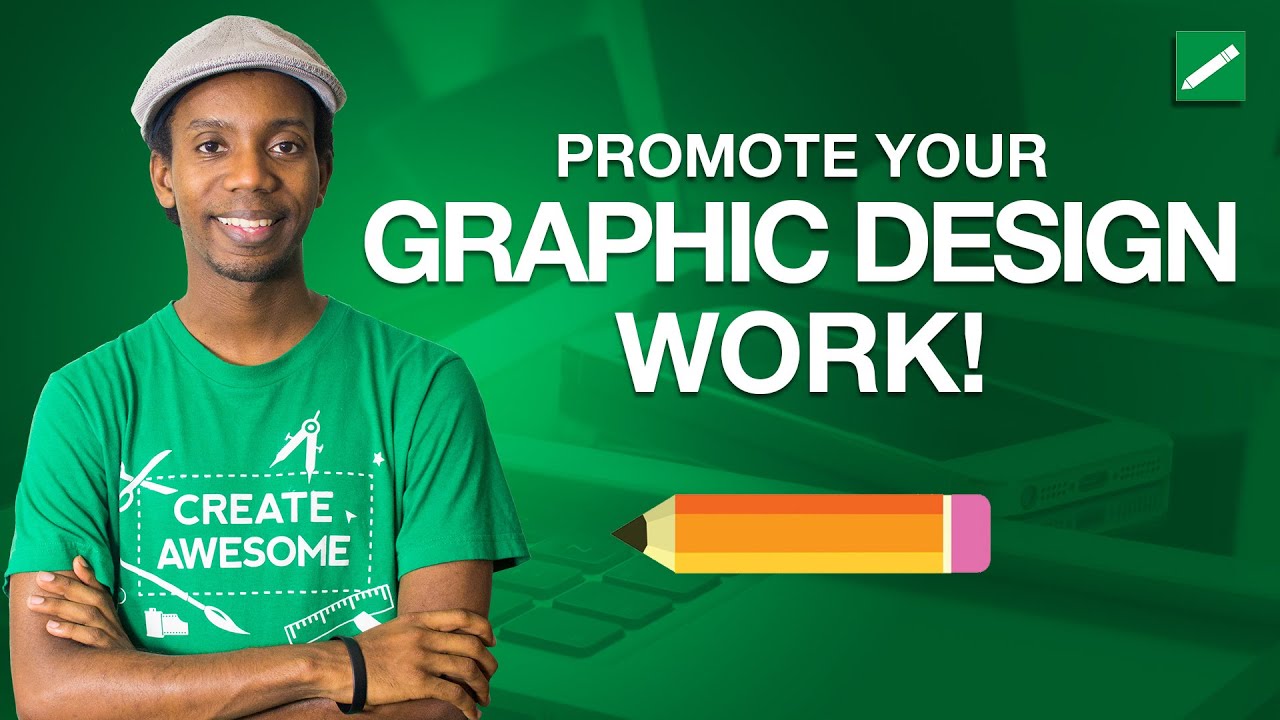
Finally, if you work remotely as an independent designer, make sure to target all types of promotional tunnels. The basic methods to promote your work as a designer are:
- Building a website for online portfolio and profile
- Establishing social media accounts for your studio or business
- Connecting with other designers on online forums
- Sharing clients’ reviews and requesting for referrals
You can also use other tools like YouTube and TikTok for creating design-related content. However, the listed methods are the basics that all remote designers must do if they want to be recognized professionally.
Developing a graphic design career can be done even as a remote or freelance designer. Follow these steps to make sure that you have a strong base for building a career.

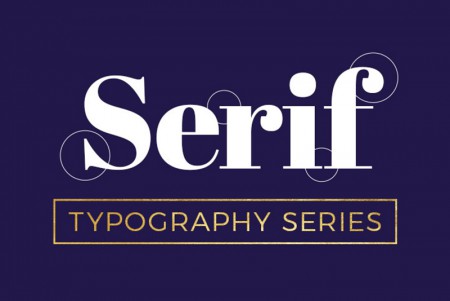
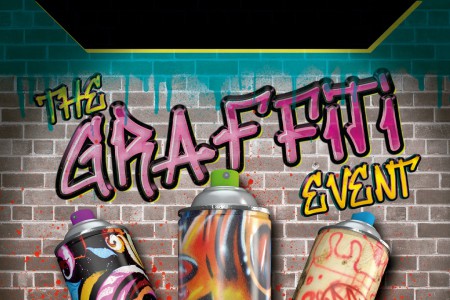
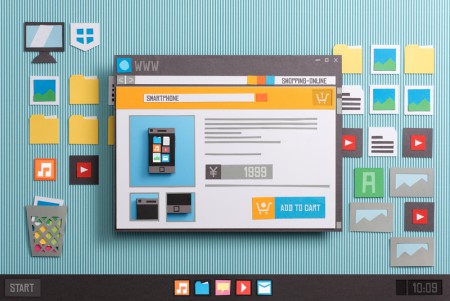
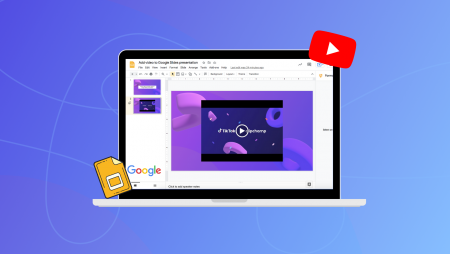


Customer questions & answers